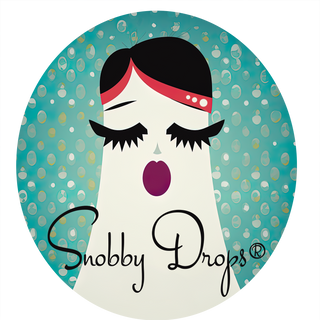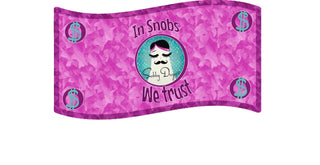Shooting Against fantasy-woods">fantasy-space">fantasy-beaches">fantasy-landscape">fantasy backdrops">backdrops: Lighting Tips
In the world of portrait photography and studio creativity, backdrops have evolved far beyond simple colored rolls. Today’s fantasy backdrops allow photographers and creatives to transport subjects to enchanted forests, fairytale castles, or dreamlike landscapes—all within the walls of their own studio. But while the backdrop sets the stage, it’s the lighting that brings a fantasy scene to life. Whether you’re a seasoned studio owner or a creative photographer seeking fresh photography ideas, mastering lighting is essential for achieving truly magical results. Let’s dive into how you can elevate your shoots with expert tips for shooting against fantasy backdrops.
Why Shooting Against Fantasy Backdrops Matters
Fantasy backdrops offer more than visual spectacle—they spark imagination, evoke emotion, and tell captivating stories. For portrait photographers and studio owners, they open doors to diverse themes, client experiences, and new creative revenue streams. But the challenge lies in making your subject feel like they belong in the magical world behind them. Learning to light your set correctly does more than illuminate faces; it blends reality with fantasy, immersing viewers into your vision.
- First Impressions Count: Clients and viewers form instant opinions. The right lighting can make or break the illusion of your fantasy set.
- Transformative Power: Well-lit backdrops change the mood, selling the drama and depth of your scene—whether it’s magical, mysterious, or ethereal.
- Professional Edge: Mastering lighting for fantasy backdrops helps you stand out in a crowded industry, attracting clientele seeking something extraordinary.
Ready to bridge the gap between imagination and reality? Let’s explore key photography ideas and lighting examples for shooting against fantasy backdrops.
Key Ideas and Lighting Examples for Shooting Against Fantasy Backdrops
1. Understand Your Backdrop’s Story
Every fantasy backdrop from modern studio collections—from woodland glades to celestial skies—suggests a different mood. Spend time studying your backdrop’s highlights, shadows, and visual narrative:
- Is it lush, high-contrast, and vibrant, or soft and misty?
- Where does the “implied” light in the backdrop seem to come from?
- Are there elements (castles, windows, beams of light) you can mimic with your own studio lighting?
2. Match the Lighting Direction and Color
For true realism, your subject’s lighting should align with the cues in the backdrop. For example:
- If the backdrop features a window with sunlight streaming from the right, position your main light to match.
- For a moonlit night scene, use cooler color temperatures (like a blue gel) to mimic moonbeams.
This attention to detail knits the foreground and background into a single magic-laden image.
3. Use Light Modifiers for Softness or Drama
Softboxes, umbrellas, and reflectors are your tools for controlling light quality. For fantasy backdrops:
- Softboxes: Create ethereal, fairy-tale looks with even, flattering light.
- Grids or Snoots: Focus the light for dreamlike shafts or to mimic sunlight through trees.
- Colored Gels: Add a surreal twist—imagine a violet forest or warm golden castle glow.
Play, experiment, and don’t hesitate to take inspiration from popular Pinterest fantasy photography trends for new lighting setups.
4. Layering and Separation: Stand Out Without Clashing
One common pitfall is blending the subject into a complex backdrop. To create dimension:
- Backlight or Rim Light: Place a light behind or to the side, creating a luminous outline that lifts your subject from the scene.
- Accent Lights: Add spotlights to highlight costume details or props.
- Distance: If space allows, place your subject a few feet from the backdrop and use a wide aperture to softly blur (bokeh) the fantasy scene, emphasizing focus on your model.
5. Lighting Ratios and Exposure: Keep the Magic Real
Test your exposure and keep your subject and backdrop balanced. Avoid blowing out details or underexposing your beautiful scene. Bracket exposures if needed, and consider using light meters for precise setup (see great tips from PPA’s lighting resources).
6. Creative Examples from Leading Photographers
- Fairytale Princesses: Soft key lights with gentle backlights make gowns shimmer in enchanted forest backdrops.
- Epic Fantasy Portraits: Use sharp, directional strobe light to mimic shafts of sunlight in castle ruins.
- Children’s Dreamscapes: Light props (like lanterns) from within to produce magical glows against whimsical skies.
For even more inspiration, check out professional lighting tutorials from Shutterbug—a countless source for photography ideas usable in your studio.
How to Use Fantasy Backdrops in the Studio
Once your lighting is dialed in, the next challenge is setup and workflow. Here’s a step-by-step guide:
1. Choosing the Right Backdrop
Match your backdrop size to your subject and studio space. For group portraits or expansive scenes, use large backdrop panels; for single portraits and closeups, a standard backdrop roll or panel works wonders. Not sure which to choose? Use our Backdrop Size Guide for quick reference.
2. Backdrop Placement & Wrinkle Management
- Hang Securely: Use backdrop stands or a mounted rail system for safety and ease of swapping backgrounds.
- Smooth Out: Vinyl and fabric backdrops can wrinkle—use a steamer, or stretch taut for a flawless look.
3. Subject Placement for Maximum Impact
When shooting against fantasy backdrops, keep these tips in mind:
- Distance Matters: Place your subject 3+ feet from the backdrop when possible. This prevents unwanted shadows and enables beautiful background blur.
- Angle is Key: Slightly angle both your light and your subject to avoid flatness and enhance dimension.
4. Prop and Wardrobe Coordination
Encourage clients to choose outfits that match the hues and mood of your chosen backdrop. Accessories, props (think lanterns, crowns, magic wands)—even subtle ones—crystalize the fantasy world in your photos and enhance studio backdrop inspiration for future shoots.
5. Post-Processing Touches
- Gently blend edges using selective blur if your subject needs additional separation from the backdrop.
- Adjust contrast and color grading to match the scene’s intended emotional impact.
- Consider subtle overlays or digital enhancements, if it fits with your vision.
Want more in-depth setup tips and real-world photo examples? Explore the Snobby Drops Tutorials & How-To collection for studio backdrop inspiration designed for every skill level.
Snobby Drops Product Tie-In: Your Source for Fantasy Backdrops and Expertise
Ready to shoot against fantasy backdrops and transform your portfolio? Snobby Drops brings your most imaginative visions to life with high-quality, artist-designed fantasy backdrops—crafted specifically for photographers and creative professionals.
- Exclusive Design Selection: From enchanted woods to ethereal fairy kingdoms, our fantasy backdrop collection is curated to inspire unique photography ideas for every client and session style.
- Studio Quality Materials: Wrinkle-resistant, easy-to-light fabrics and vinyl options that simplify your studio workflow.
- Tutorial Support: Access video guides, lighting walkthroughs, and expert advice in our Tutorials & How-To collection, making it easy to master shooting against fantasy backdrops: lighting tips for every setting.
What sets Snobby Drops apart is not just the artistry of our designs, but our deep commitment to photographer education. Explore detailed lighting diagrams, setup inspiration, and posing advice crafted for both beginners and experts. Our fantasy backdrop collection helps you turn ordinary sessions into extraordinary, immersive experiences—your clients will remember (and share) for years to come.

Conclusion: Let Your Imagination Lead—And Let Lighting Make It Real
Shooting against fantasy backdrops is where artistry and technical mastery meet. The right lighting elevates your studio sessions, harmonizing subject and scene for trans


